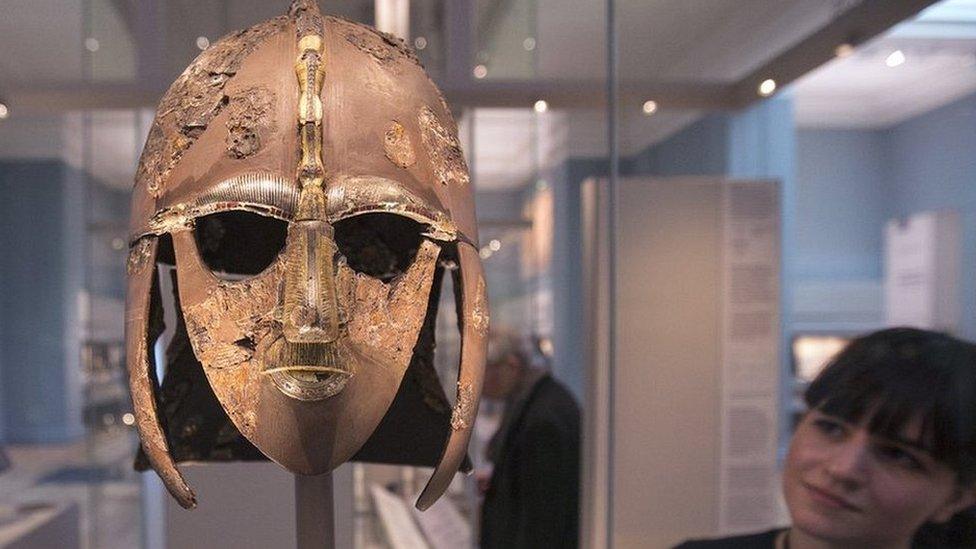UK's 'Tutankhamun' tomb: Your questions answered
- Published
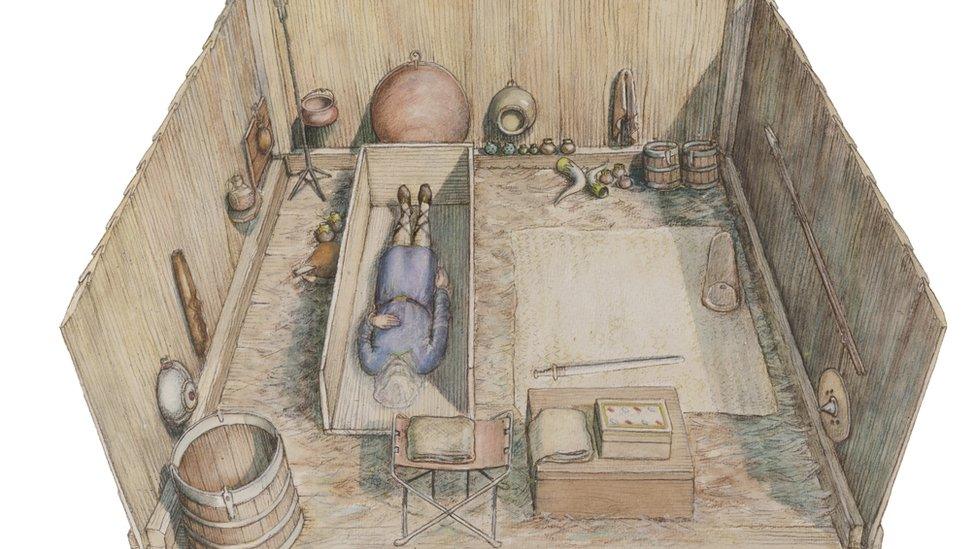
The tomb contained 40 artefacts including treasures from other kingdoms
Treasures discovered in an Anglo-Saxon royal burial site have gone on display for the first time. The site, discovered between a pub and an Aldi supermarket in 2003, has been described as the UK's answer to Tutankhamun's tomb.
Here we answer your questions on the astonishing find at Prittlewell near Southend.
How was it discovered?
The Museum of London Archaeology (MOLA) was commissioned by Southend-on-Sea Borough Council to perform an archaeological investigation on the site ahead of a proposed road widening scheme.
The small verge between the road and rail line was known to be in the area of an Anglo-Saxon cemetery,
However, said MOLA's Anglo-Saxon specialist Sue Hirst, "archaeologists had not expected to discover an intact princely burial".
The grave contained dozens of rare artefacts and tooth enamel fragments which experts have suggested could belong to Seaxa, a 6th Century Anglo-Saxon prince.
He was brother to Saebert, the Saxon king of Essex from AD604 to AD616.
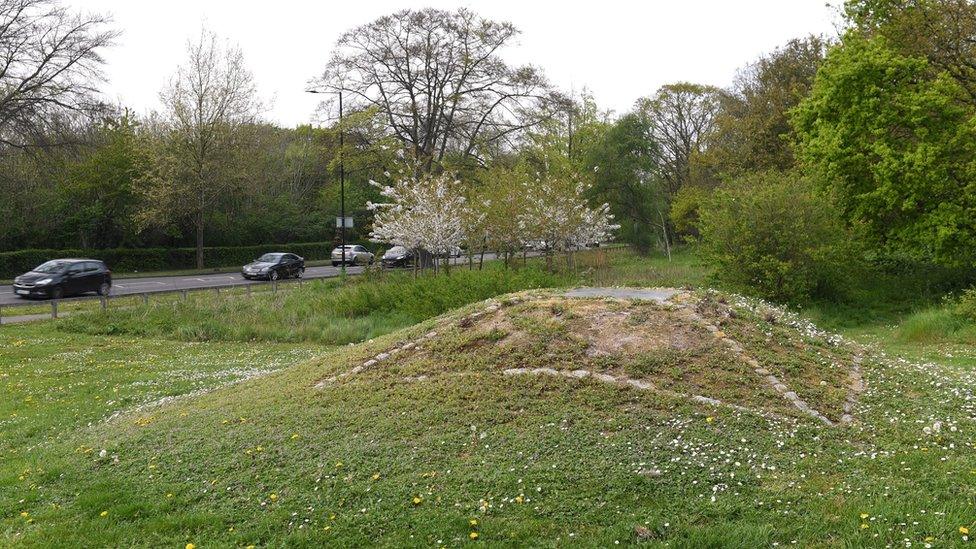
This site near Southend hid countless archaeological treasures
How much were the treasures found worth in today's money?
Some 40 rare and precious artefacts were found inside the burial site. They included an ornate sword with collars of ribbed gold, drinking vessels made with the precious metal, decorative glass beakers and a lyre.
Experts say the finds in Southend are unique, so it is difficult to put a monetary price on them. However, "in archaeological terms, they are invaluable", said Ms Hirst.
Why don't these tombs get waterlogged?
"This chamber was made of timber that decayed over time with soil from the mound above gradually seeping into the chamber," explained Ms Hirst.
"The ground at the site is relatively free-draining sandy soil so there was very little waterlogging."
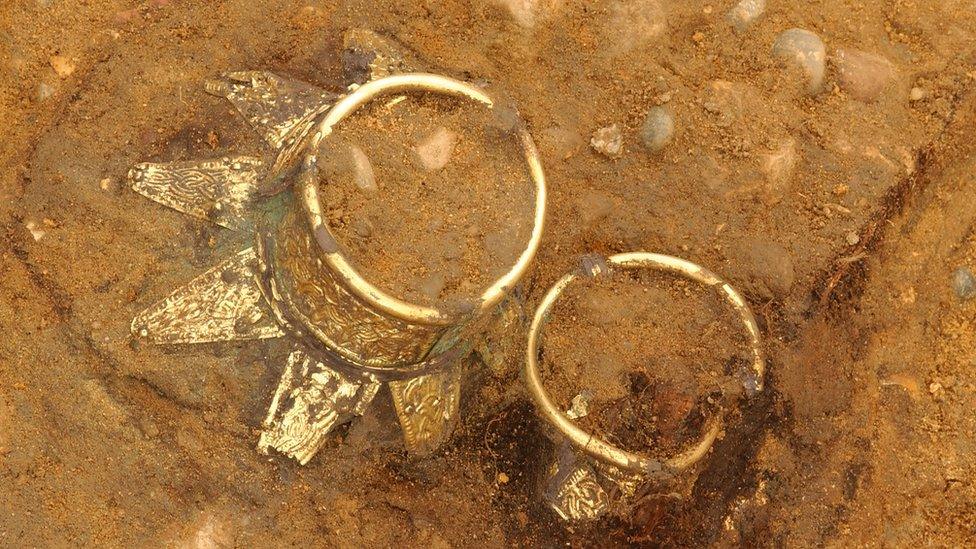
Gold decorated drinking vessels were among the treasures found in the royal burial
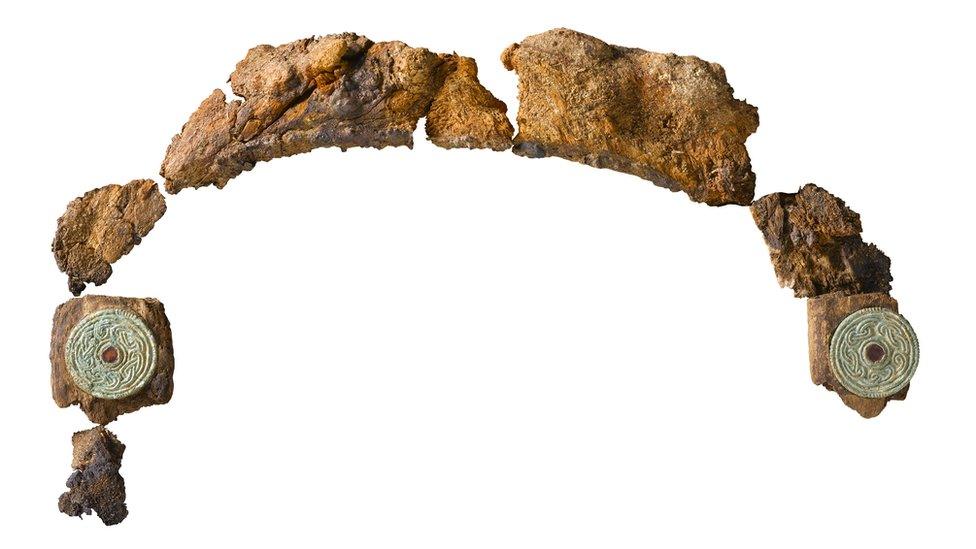
A lyre, a stringed musical instrument, was also among the finds
Why is there no or little trace of the occupant?
The environmental conditions in the chamber meant the skeleton and most of the organic remains - including the timber structure - had decayed.
But fragments of tooth enamel were later found in environmental samples that proved there had been a person buried inside, said Ms Hirst.
"The position of the gold crosses, gold belt buckle and copper-alloy garter buckles fastened over the instep of the foot within the coffin allows us to infer that he was about 5ft 8in tall," she said.

The Prittlewell burial site was discovered in 2003
Is the DNA of the body available?
Since only tiny fragmentary remains of tooth enamel were found in the burial chamber, experts say there is not enough material for DNA analysis.
What was the motive for burying him at that precise location?
The site was within an existing Anglo-Saxon cemetery and there is archaeological evidence for several settlements nearby.
"The person buried is likely to have been of princely lineage from the ruling families of the Kingdom of the East Saxons," said Ms Hirst.
"The burial implies the presence of such a ruling family in the area with an estate including a great hall where followers and visitors could receive hospitality."

Portable X-ray fluorescence machines were used to work out the alloy composition of artefacts
Would Seaxa's brother, Saebert, be buried nearby then?
It is possible, but the discovery at Prittlewell offers no conclusive evidence.
Ms Hirst said: "Saebert could have also been buried in the Prittlewell area, or he might have been buried in London where he was baptised - or indeed elsewhere."
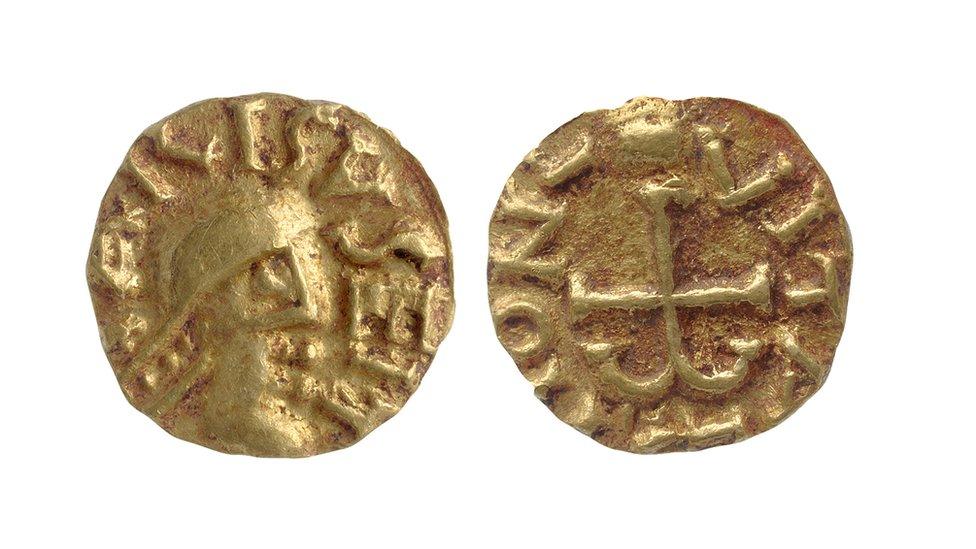
The burial is believed to belong to Seaxa, the brother of King Saebert
Did archaeologists find any Roman artefacts belonging to Seaxa?
None of the artefacts found in the burial chamber were Roman, but several are related to Roman and Byzantine objects.
These include the folding iron stool and the iron stand thought to have been used as a candelabrum - both items that evoke authority and high status, said Ms Hirst.
There are also items imported from the Christian eastern Mediterranean, such as a silver spoon, copper-alloy flagon and bowl.
Who should you contact if you find something of archaeological significance?
Archaeologists are involved from an early stage in development projects, as set out in planning guidelines, so they are normally the ones who find sites of significance.
But if members of the public do find artefacts they think are significant, they should try not to disturb them and contact their local finds liaison officer at the Portable Antiquities Scheme.
More information is available on the scheme's website, external.
You may also be interested in:
- Published9 May 2019

- Published6 October 2018
